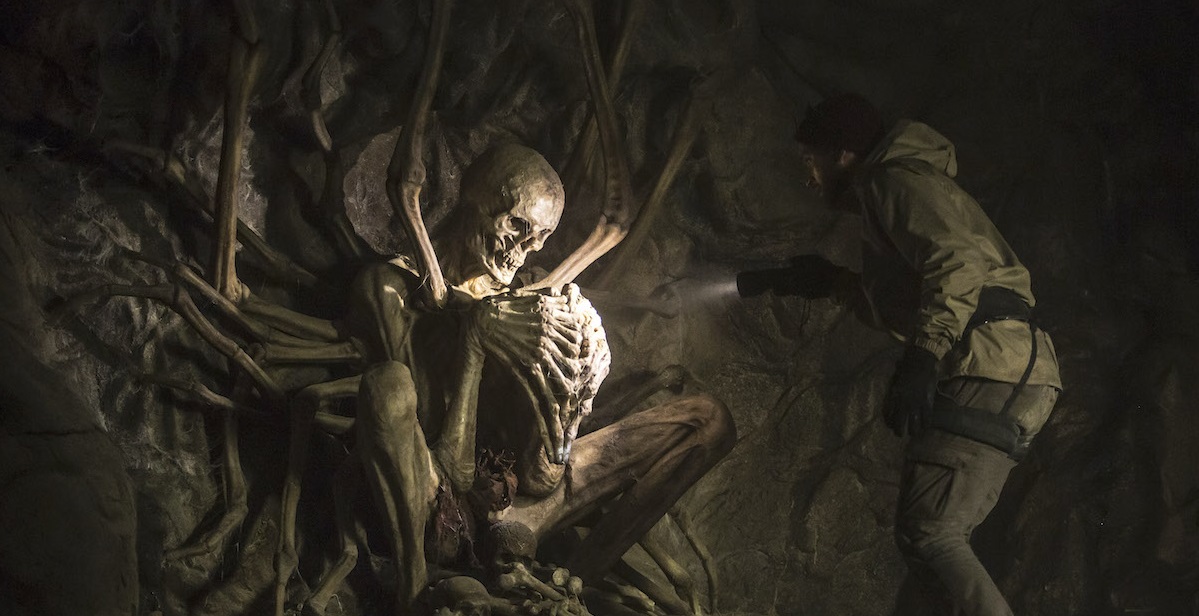I think we can all generally agree that when it comes to new movie releases, 2020 is going to be looked back upon like some kind of cultural blind spot. We only got a couple months to actually visit theaters before everything was put on lockdown. January and February, typically the months where bad movies go to die, ended up being most peoples’ only window to see something on the big screen. The few movies that weren’t postponed to the other side of the apocalypse are going to find most of their audiences in years to come as sociological archaeologists plumb the depths for ancient artifacts.
In reaction to theaters closing their doors worldwide, the different studios did some boundry-testing of their own as they experimented with alternative methods of distribution. Disney went whole-hog into their new streaming platform, probing for how much more their subscribers would pay to get their housebound children off their backs. Warner Bros struck a deal with HBO Max in 2021 to be the exclusive home (for a month) of many of their biggest releases before dropping them in empty picturehouses. But the more interesting case to me is how some movies got unceremoniously dumped into these barely-operating theaters to die without the comfort of a second opinion.
The Empty Man has been reported on as one of the biggest flops of 2020 because, rather than being released to streaming, it was booked into theaters by 20th Century Studios (now one of the ever-sprouting arms of Disney) in October as if the world wasn’t still in the middle of losing its collective mind. From what I can tell the only marketing that was even done is a single trailer that was released a mere week before the film’s release, misrepresenting the film as throwaway internet folklore trash in the vein of other Men, be they Slender or Bye Bye.
The film opens with a 20-minute sequence following a group of hikers in the Himalayas stumbling upon a hidden ritual room, complete with terrifying monster skeleton, and subsequently being waylaid in a nearby cabin by a snowstorm. It’s not long before we know something is wrong when one of the men begins chanting gibberish from a catatonic state and a mysterious silhouette stalks the group from out in the storm. This pre-title prologue could stand on its own as a very effective and efficient horror short but in the context of the rest of the film serves as a tonal appetizer for what is to come.
Post-prologue, the rest of the movie follows James Lasombra (James Badge Dale), a widowed ex-cop-turned-private-detective who has taken up the task of finding a friend’s daughter. Amanda, the teenage daughter, has gone missing after reportedly engaging in summoning an urban legend known as The Empty Man. From here the film kind of pivots into a crime procedural as James pries around town trying to find Amanda and her friends. Had it not been for the prologue, I may have actually given up all hope for the movie at this point. Without context, all signs point to a paint-by-numbers urban legend slasher rife with jump-scare tropes as teens are picked off one-by-one by a shadowy and mysterious entity, probably played by an ex-WWE wrestler or something.
But then the movie changes again. Before we’re even an hour into the 135-minute film, some of the core mysteries have already begun to solve themselves, albeit not without opening up a few more doors to explore. Legends of The Empty Man point to an institution named The Pontifex Society, a cult of sorts led by Arthur Parsons (Stephen Root) that holds some pretty radical beliefs about the nature of… well, just about everything. Without diving too deep into where the investigation ultimately takes James, I’ll just say that it widens in scope without letting the central mystery get lost in the bigger picture.
The director David Prior, who also adapted the script from Cullen Bunn’s comic, seems to have worked a bit on behind-the-scenes content for some of David Fincher’s films. While it’s not apparent that the two Davids have really worked together in any real capacity, Prior’s work definitely feels at least inspired by Fincher’s cold, rigid, and technical style, specifically that of something like Zodiac or The Girl With the Dragon Tattoo. For something that could’ve easily been slapped together, seeing how little faith 20th Century seems to have had, it’s actually occasionally a very striking, gorgeous and well-edited film with great care even given to details in sound design. It’s from top-to-bottom a very professionally-presented film.
Even though this type of story is very much a fastball straight down the middle for my personal tastes, I’m not entirely convinced it completely stuck the landing. The final 20 minutes of the film come to a screeching halt as we get a lengthy exposition-dump that attempts to fill in some of the cracks in the narrative. While I wasn’t too keen on how the final act was handled, at the same time I kind of acknowledge that it’s a very fitting resolution to the kind of story that was being told. It’s a difficult feeling to explain without straight-up spoiling things.
David Prior’s The Empty Man is a movie that the vast majority of people are going to overlook. Not only was it basically released while everyone’s backs were turned, but it was also made up to look like something it is not to appeal to an audience that won’t appreciate it. If you’re looking for a solid crime thriller with some supernatural horror elements that values slow creeping dread over predictable jump-scares and builds up to epic scope over a long runtime, you may be in the target demographic.
8

